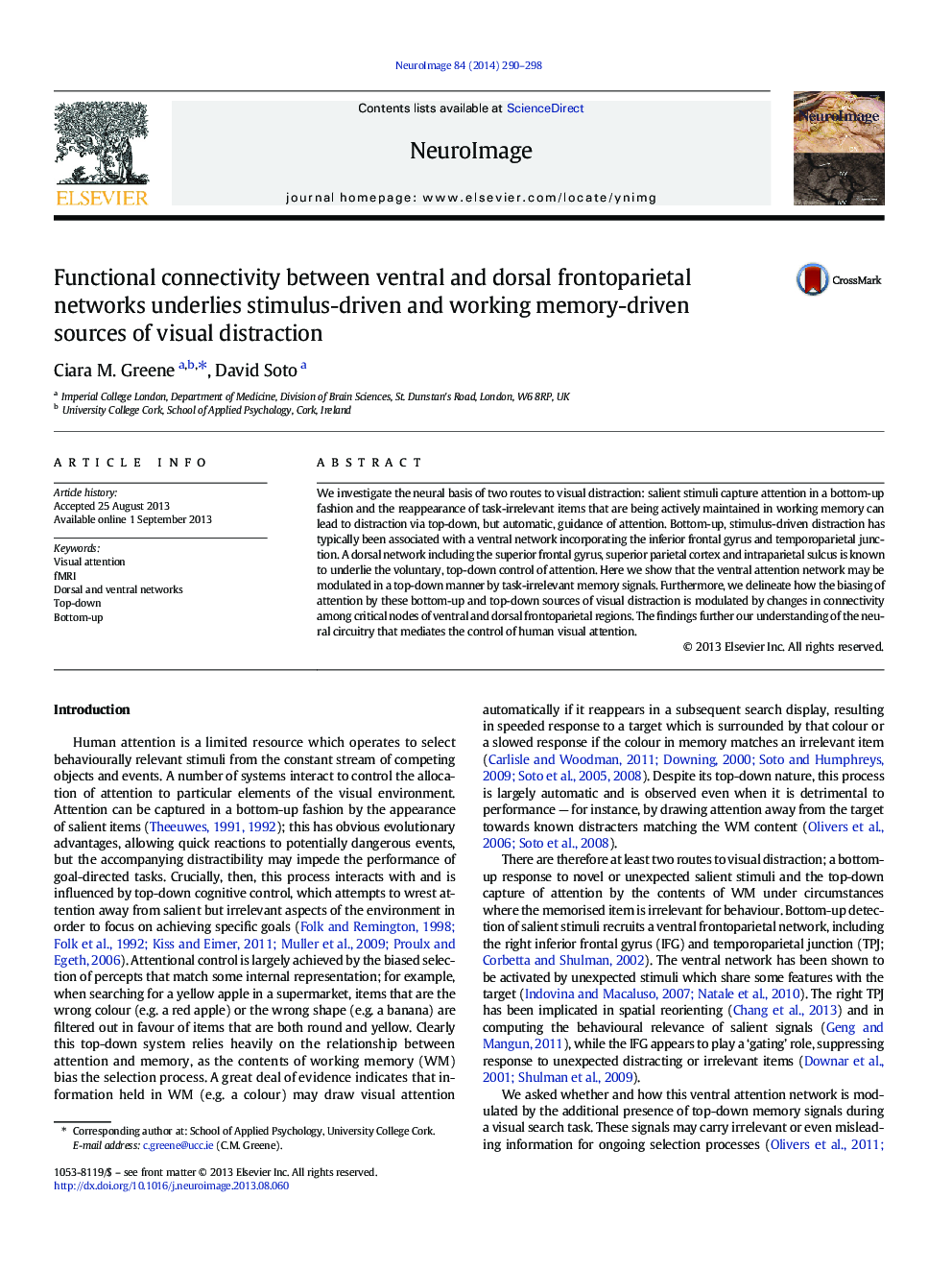| Article ID | Journal | Published Year | Pages | File Type |
|---|---|---|---|---|
| 6028444 | NeuroImage | 2014 | 9 Pages |
â¢We examine neural response to bottom-up and top-down sources of distraction.â¢We investigate functional connectivity between dorsal and ventral attention networks.â¢Activity in the ventral network is modulated by top-down signals.â¢Attentional biasing influences connectivity between dorsal and ventral networks.
We investigate the neural basis of two routes to visual distraction: salient stimuli capture attention in a bottom-up fashion and the reappearance of task-irrelevant items that are being actively maintained in working memory can lead to distraction via top-down, but automatic, guidance of attention. Bottom-up, stimulus-driven distraction has typically been associated with a ventral network incorporating the inferior frontal gyrus and temporoparietal junction. A dorsal network including the superior frontal gyrus, superior parietal cortex and intraparietal sulcus is known to underlie the voluntary, top-down control of attention. Here we show that the ventral attention network may be modulated in a top-down manner by task-irrelevant memory signals. Furthermore, we delineate how the biasing of attention by these bottom-up and top-down sources of visual distraction is modulated by changes in connectivity among critical nodes of ventral and dorsal frontoparietal regions. The findings further our understanding of the neural circuitry that mediates the control of human visual attention.
